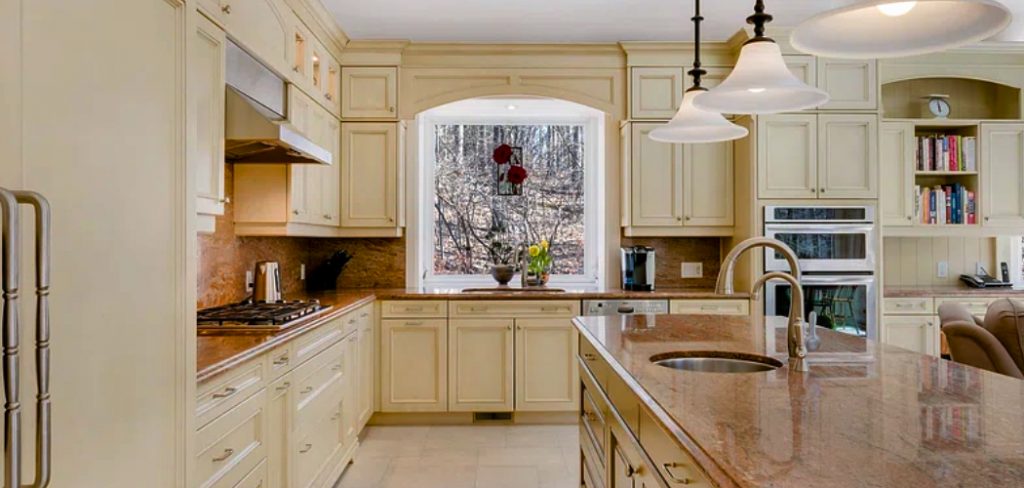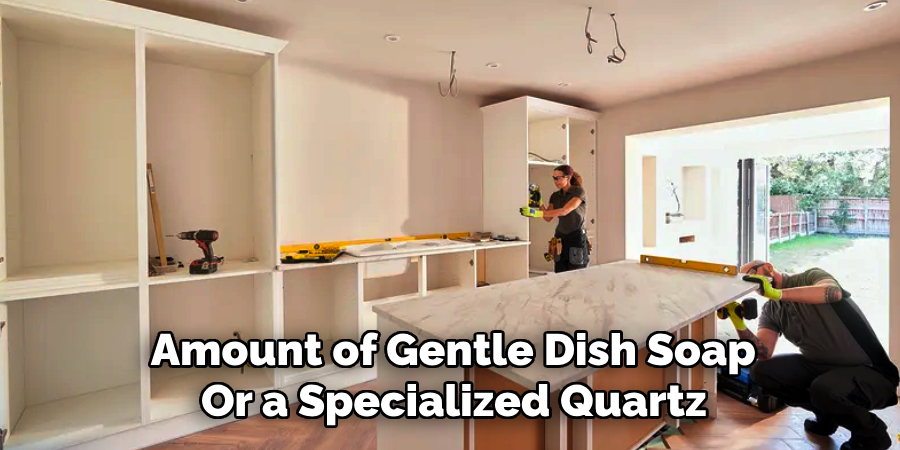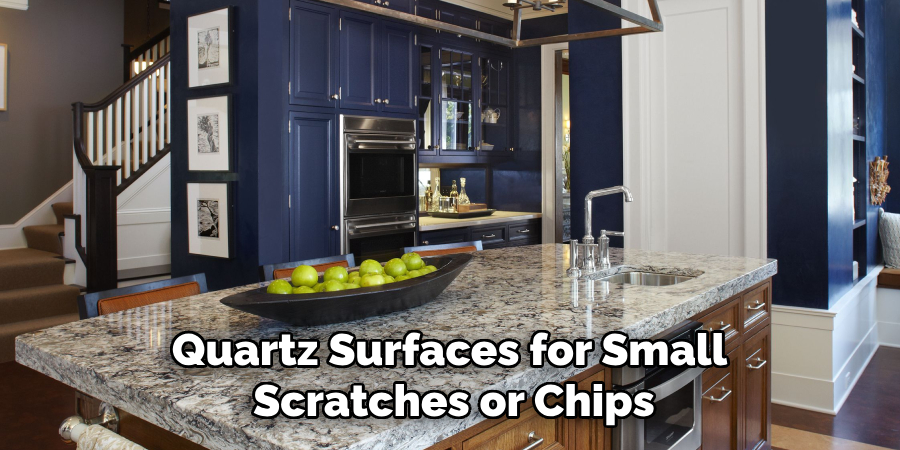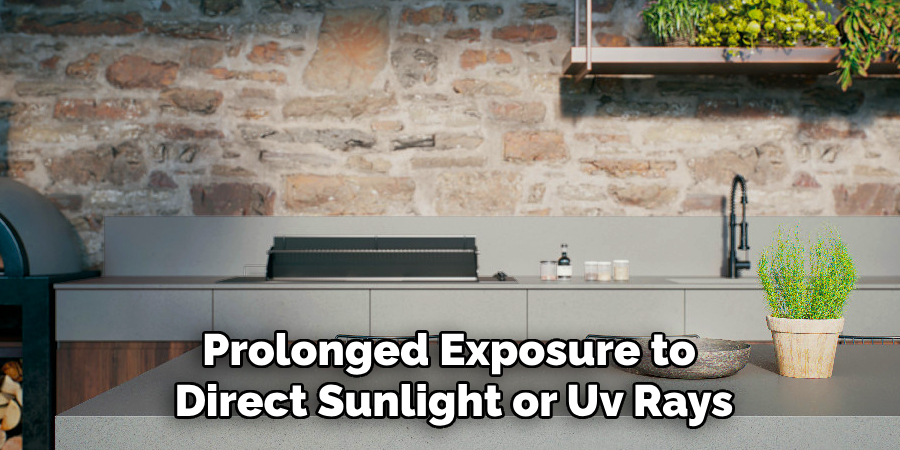How do you keep your quartz countertop looking sparkling clean? Quartz is a durable and low-maintenance material that still needs regular care and cleaning to maintain its shine.

Quartz countertops are popular for homeowners due to their durability, sleek appearance, and low maintenance requirements. However, keeping them shiny and looking their best does require some basic care and attention. Regular cleaning, proper handling, and appropriate products are key to maintaining their luster. Whether you are dealing with everyday smudges, stubborn stains, or a dull surface, learning the right techniques will help restore and preserve the stunning shine of your quartz countertop.
This guide on how to shine a quartz countertop will walk you through simple, practical steps to achieve a spotless, gleaming surface.
What Are the Causes of Dullness on Quartz Countertops?
Before diving into how to shine a quartz countertop, it’s essential to understand why they may become dull or lose their luster over time. Some common causes include:
- Grease and oil buildup from cooking
- Hard water mineral deposits
- Stains from acidic substances like lemon juice or vinegar
- Improper cleaning techniques or using harsh chemicals
Knowing these potential culprits can help you prevent them from damaging the surface of your quartz countertops. Now, let’s move on to shining your quartz countertop.
What Will You Need?
The good news is that you don’t need fancy or expensive products to achieve a shiny quartz countertop. In fact, most items you’ll need are already in your cleaning arsenal. Here’s what you’ll need:
- Soft, non-abrasive cloth
- Warm water
- Gentle dish soap or specialized quartz cleaner
- Glass cleaner (optional)
- Microfiber cloth (optional)
Now that you have your supplies ready, let’s begin the shining process.
8 Easy Steps on How to Shine a Quartz Countertop
Step 1: Start with Gentle Cleaning

To begin the shining process, starting with a clean surface is essential. Use your soft, non-abrasive cloth and warm water mixed with a small amount of gentle dish soap or a specialized quartz cleaner. Gently wipe down the entire countertop, focusing on areas with visible dirt, stains, or residue. This step removes debris or grime, preventing scratching or dullness during the shining process. Clean in smooth, circular motions rather than harsh scrubbing to protect the quartz’s surface. Rinse the cloth in clean water frequently to avoid redistributing dirt. Once you’re done wiping, use a dry cloth to remove excess moisture, leaving the countertop prepped and ready for the next steps.
Step 2: Remove Stubborn Stains
Sometimes, gentle cleaning won’t fully tackle stubborn stains or hard-to-remove spots on your quartz countertop. To address these, create a paste by mixing baking soda with a small amount of water until it reaches a thick, spreadable consistency. Apply the paste directly onto the stain and allow it to sit for 5-10 minutes to help break down the residue. Afterward, use a soft, non-abrasive cloth to rub the area in a circular motion gently.
For tougher stains, such as those caused by dried food, wine, or grease, you may use a non-abrasive sponge or a plastic scraper explicitly designed for quartz surfaces. Carefully scrape off the residue without applying too much pressure, as forceful movements can damage the surface. Avoid using harsh chemicals or abrasive cleaning pads, as these can permanently harm the quartz’s finish.
Once the stain is removed, rinse the area thoroughly with clean water to ensure no residue from the paste or cleaning product is left behind. Dry the countertop with a clean, soft cloth to prevent water spots, and ensure it’s fully ready for further shines and treatments in the next steps.
Step 3: Preventing Damage
To ensure the longevity of your quartz countertops, take precautions to avoid damage from heat, heavy impact, and harsh substances. Always use trivets or heat-resistant pads under hot pots and pans to prevent thermal shock or discoloration. Avoid cutting directly on the quartz surface by using cutting boards, as sharp knives can leave marks. Additionally, refrain from exposing the quartz to strong chemicals or solvents like bleach, paint thinners, or oil-based products, which can weaken its resilience. Practicing these preventative measures will help keep your quartz countertops looking flawless for years.
Step 4: Repairing Minor Damage

Even with proper care, minor damage to quartz countertops can occasionally occur. Consider using an epoxy resin or a color-matched repair kit designed specifically for quartz surfaces for small scratches or chips. These products can help restore the surface seamlessly and protect it from further deterioration. If the damage is significant or beyond a simple fix, it is best to consult a professional to avoid causing more harm. Regularly inspecting your countertops for signs of wear and addressing issues promptly will ensure their lasting quality and appearance.
Step 5: Polishing Your Quartz Countertops
To maintain the shine and luster of your quartz countertops, occasional polishing can be beneficial. Use a quartz-safe polish or a non-abrasive countertop cleaner specifically designed for engineered stone surfaces. Apply the polish in small amounts using a soft, microfiber cloth, working in circular motions to evenly distribute the product. Once applied, buff the countertop gently to achieve a streak-free finish. Avoid using wax-based or overly abrasive products, as they can leave residue or damage the surface. Polishing enhances the appearance and provides an extra layer of protection against daily wear and tear.
Step 6: Preventing Heat and Impact Damage

Protecting your quartz countertops from excessive heat and heavy impacts is essential for maintaining their integrity. Always use trivets or heat-resistant pads under hot pots, pans, and other heated items to prevent thermal shock, which can cause discoloration or cracking. Additionally, avoid placing heavy objects or applying excessive force directly onto the surface, as this could lead to chipping or other damage. Being mindful of these precautions will help ensure the longevity and durability of your quartz countertops.
Step 7: Regular Maintenance and Inspections
Practice regular maintenance and routine inspections to keep your quartz countertops looking their best. Wipe down the surfaces daily using a soft, damp cloth and a mild cleaning solution to prevent buildup from spills and stains. Periodically check for small chips, cracks, or other signs of wear, and address any issues promptly to avoid further damage. Incorporating these habits into your routine will help preserve the beauty and functionality of your quartz countertops for years to come.
Step 8: Protecting Against UV Exposure

Quartz countertops are not designed for prolonged exposure to direct sunlight or UV rays, as this can lead to fading or discoloration over time. If your countertops are in an area with significant sunlight, consider using curtains, blinds, or UV-protective window films to shield them from harmful rays. Additionally, avoid placing quartz countertops in outdoor settings where direct sunlight is inevitable. Taking these preventive measures will help maintain the color and appearance of your countertops.
By following these steps and practicing proper care and maintenance, you can keep your quartz countertops looking beautiful for years.
5 Things You Should Avoid
- Using Harsh Chemicals: Avoid using abrasive cleaners or harsh chemicals such as bleach, ammonia, or strong acidic products, as they can damage the surface and dull the shine of your quartz countertop.
- Scrubbing with Steel Wool or Abrasive Pads: These materials can scratch the surface of your quartz countertop, leaving it with unsightly marks that are difficult to repair.
- Exposing the Surface to High Heat: Placing hot pans or pots directly on the countertop can cause thermal damage and may lead to cracking or discoloration.
- Using Oil-Based Cleaners: Products with oil-based ingredients can leave a residue on the countertop, making it appear cloudy or greasy instead of shiny.
- Ignoring Spills and Stains: Leaving spills, especially from acidic substances like wine or lemon juice, unattended can lead to staining or etching over time, diminishing the countertop’s pristine appearance.
Can You Melt Quartz Into Glass?
Quartz is a crystalline mineral composed of silicon dioxide. It has a melting point of around 1,650 degrees Celsius (3,002 degrees Fahrenheit). This means that while it can withstand high temperatures, it cannot naturally melt into glass.
However, when combined with other materials and heated at extremely high temperatures in a furnace, quartz can be melted down and transformed into glass or other engineered stone for use in construction and other industries.
However, on its own, quartz will not melt into glass due to its high melting point.
Conclusion
To maintain the shine of your quartz countertop, it is important to prioritize proper care and regular cleaning.
Use a mild dish soap and a soft cloth or sponge for daily upkeep, ensuring that debris and spills are promptly addressed. Periodically, you can use specially formulated quartz polish to enhance the surface’s brilliance. Avoid harsh cleaners, abrasives, and exposing the countertop to extreme heat to prevent damage.
Hopefully, the article on how to shine a quartz countertop has given you the necessary information and tips to keep your countertop looking brand new for years to come. So, be sure to follow these tips and enjoy your beautiful, shiny quartz countertop! Happy cleaning!
Professional Focus
Angela Ervin, a former interior designer turned blogger, specializes in kitchen design and renovations. Through her website, she blends her passion for cooking with design expertise, sharing practical and creative ideas. Known for balancing functionality and beauty, Angela’s insightful content has made her a trusted voice in home design and lifestyle.
About the Author
Angela Ervin, an experienced interior designer and blogger, combines her passion for kitchen renovations with storytelling. Living in Petersburg with her family, she enjoys cooking and testing her projects firsthand. Known for her humor and relatable style, Angela shares creative, functional design insights through her content, making her a trusted voice in home design.
Education History
University: Virginia Commonwealth University
Degree: Bachelor of Fine Arts (BFA) in Interior Design
- Angela’s education at VCU focused on mastering core interior design principles, including spatial planning, color theory, materials selection, and sustainable design practices.
- She gained hands-on experience through studio projects and collaborative design exercises, which honed her ability to create functional and aesthetically pleasing environments.
- Her coursework also emphasized problem-solving and practical applications of design, preparing her for real-world projects like her self-directed kitchen renovations.
- The program’s strong foundation in both technical skills and creative expression shaped Angela’s ability to seamlessly integrate form and function in her work.
